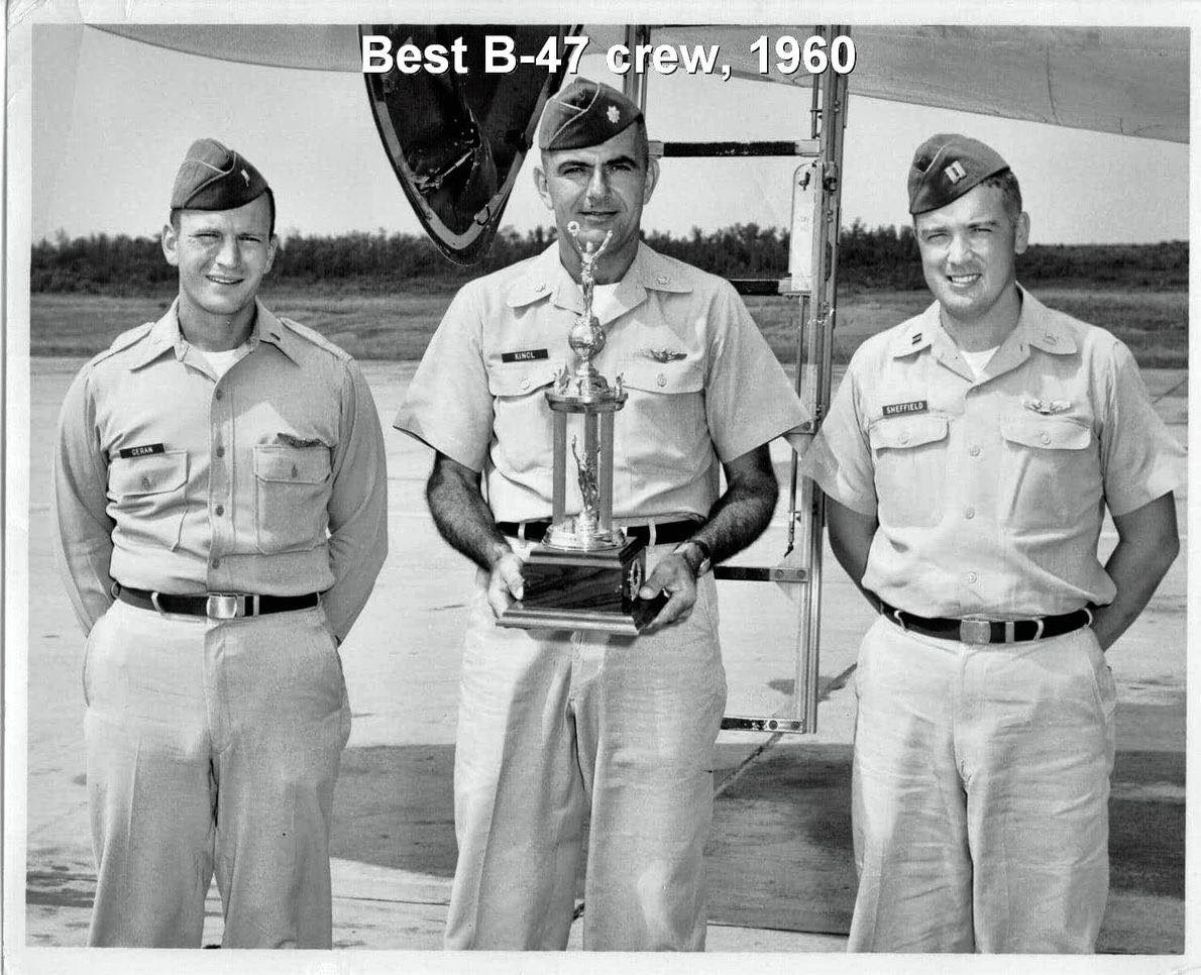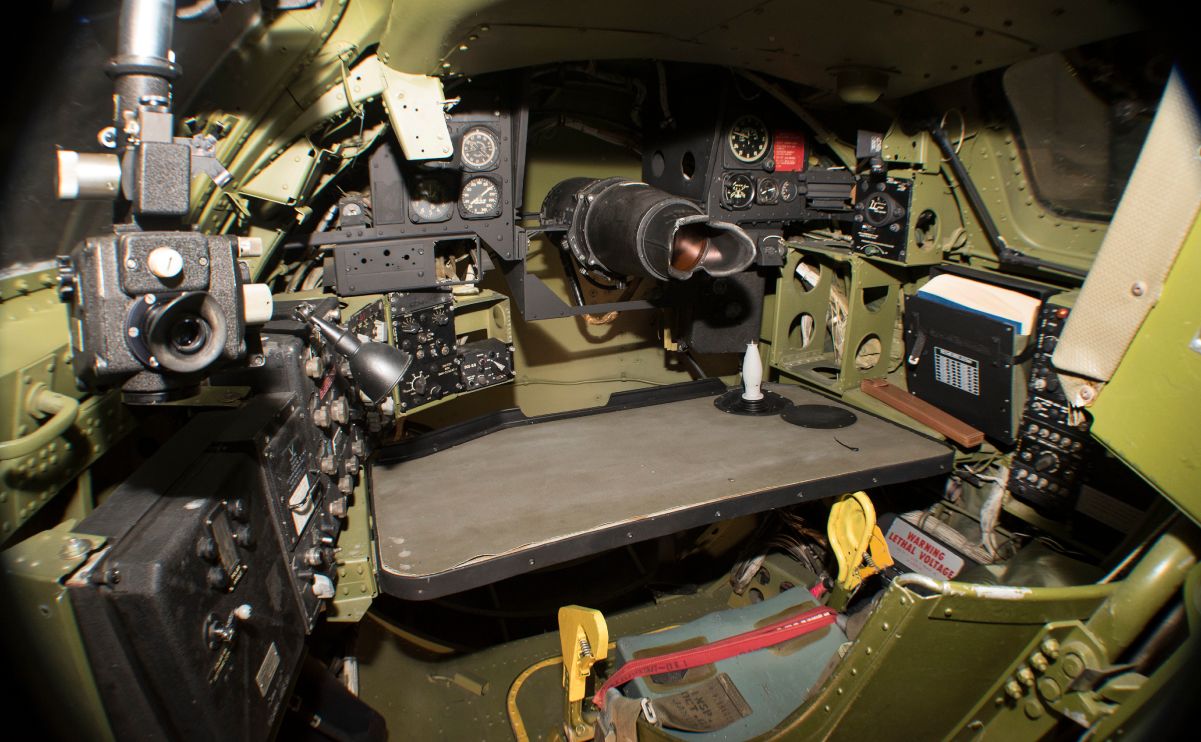The B-47 Stratojet
The first XB-47 prototype, which was built to fulfill a 1944 need, flew in December 1947 and outperformed its rivals. It had sweeping wings, jet engines in underwing pods, main landing gear located on the fuselage, and automated systems that reduced the crew number to three, among many other cutting-edge technologies for the period.
The B-47 started to replace the B-29 and B-50 propeller-driven bombers in May 1951 in the medium bomber units of the US Air Force’s Strategic Air Command (SAC). The B-47’s maximum speed was more than 200 mph faster than the aircraft it replaced, even though it could carry roughly the same bomb tonnage.
45 B-47s took off from Little Rock AFB to the UK, only one made it across the Atlantic Ocean
45 B-47s were launched from Little Rock Air Force Base (AFB) to the United Kingdom in 1956 as part of a bomb run exercise. All except one of the B-47s returned to the United States after crossing the Atlantic. Lieutenant Richard “Butch” Sheffield, a B-47 navigator and bombardier, was prepared to follow. He needed to learn how to lead rapidly.
He recalls in his unpublished book, “The Very First:”
‘As we prepared to fly to the UK, my aircraft and crew were to be the fifth aircraft in a flight of five. I believe that because I was the lowest-ranking navigator with the least experience, they did not want me to have to navigate the Atlantic as lead or alone.
‘We took off from Little Rock, all forty-five B-47s, and flew up to Northern New York State to refuel from KC-97 tankers flying at fifteen thousand feet. We were at thirty-five-thousand feet. Tankers put out a radar signal that we could identify on our radar screen. Each set of tankers, nine different sets, put signals that were almost alike but not. I saw our signal and told the aircraft commander (AC). He relayed to the lead aircraft that we had the tankers that we were to refuel with, and they didn’t believe him.
‘As we overflew them, we went over twice as fast and twenty thousand feet above them. My AC asked me if I was sure, and I said yes. He then told the lead, you are going to miss them; they are right below us now. Once again, they didn’t believe him, or I guess they didn’t believe that a Lieutenant could find the tankers from among the many radar signals.’

Heading for the UK
He continues;
‘My AC asked me for a heading for the tankers and left the formation. We rendezvoused with our tankers and took on our fuel. After refueling (we could not use the radios while refueling), the pilots asked for our location, and I gave it to them. They called the rest of the flight and told them where the tankers were at that time; by then, they were far away from the tankers.
‘I really didn’t know what we were going to do next, then the AC said; give me a heading for the UK. Now, I knew we were going to the UK alone, and I was going to navigate the North Atlantic in the middle of the winter, all by myself. I broke into a cold sweat; I was not prepared to do it.
‘Normally, the fifth aircraft in a flight of five just station keeps (keeps other aircraft on the radar) on the other aircraft in front of them, and the navigator/copilot team doesn’t shoot stars.
‘The lead navigator would do his planning by pre-computing the star shots on the ground the day before the flight. Now, I had to do the star computations in the small area and dim light of the cockpit. All across the Atlantic, I shot one star after another. My copilot, Mac McCraken, was young and eager, like me. He would do anything I asked him in the air. The older World War Two copilots would not have done it. This was hard work, and we never stopped until I saw the UK lands on the radar. WE HAD MADE IT.’

The only B-47 out of 45 that made it from Little Rock AFB to the UK
Sheffield concludes;
‘The following day, we were all told to report to see the Squadron Commander in his Office. This always meant trouble or an award. When we arrived, the AC was told to go in alone; Mac and I waited outside the door. We heard the Commander hollering all over the building, he was very mad that we had left the formation and went it alone.
‘When the AC came out, he was smiling. He said the Squadron Commander was just mad that the others were still back in the US, and they had never found the tankers and landed in North Eastern United States!
‘He said, I told him, we are here, and they are back in the US, so who goofed up?’
When he crossed the Atlantic Ocean alone, he was just 23 years old. A few years later, he was chosen to be among the first navigators on the new B-58. He was also the first RSO to be chosen for the SR-71 Blackbird initiative. He was ordered to follow the experienced, older navigators, but he had to take the lead and soon become good at it.
Check out the Habubrats SR-71‘s Twitter profile and the Born into the Wilde Blue Yonder‘s Facebook page for further Blackbird photos and stories.

Photo by U.S. Air Force and Linda Sheffield Miller

